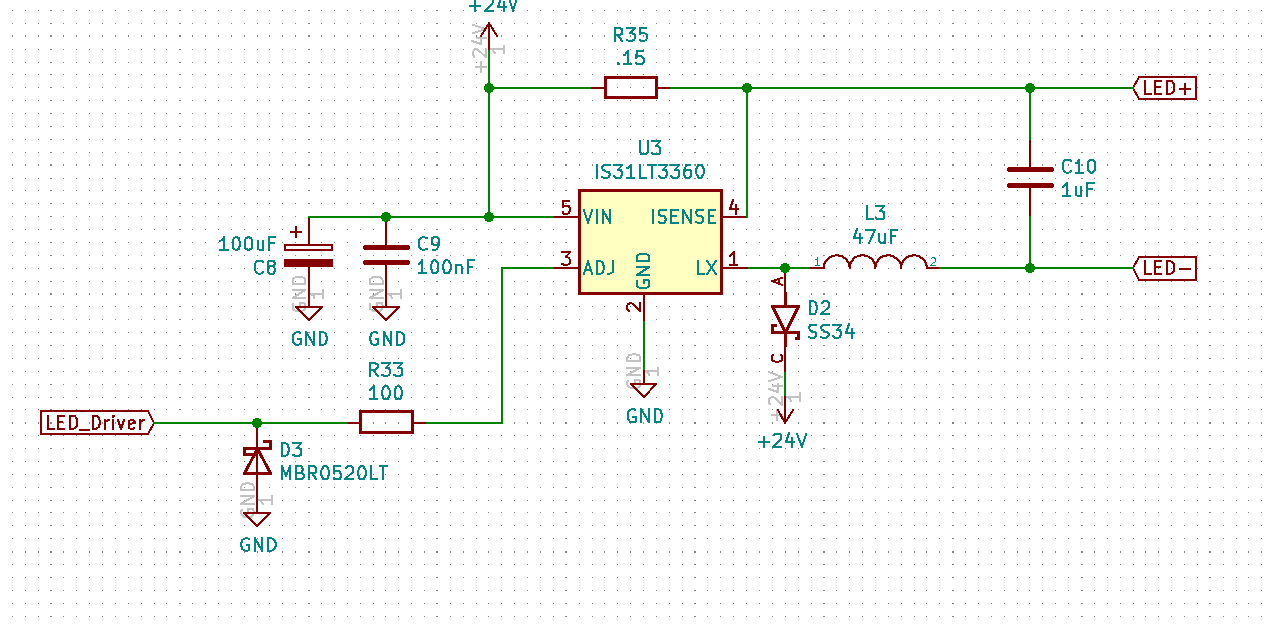I have to design an LED driver for work. I am using the IS31LT3360 as the driver chip. On page 10 of its datasheet it states the chip can be driven with pwm. I came up with the following circuit. I would appriciate any feedback on wether I am doing this correctly. The mosfet is driven with a 0-3.3V PWM signal.
I am a little confused about this line on the datasheet:
"The PWM signal must have the driving ability to drive internal 500kΩ pull-up resistor. "
What does that mean? I am not sure what driving a resistor means.
Datasheet IS31LT3360 :
http://www.issi.com/WW/pdf/31LT3360.pdf

Edit after Marcus's comment. The datasheet suggests using a MCUs output (AS LONG AS IT IS BELOW 5V AND ABOVE 1.2V, better?) as below to drive the chip.


